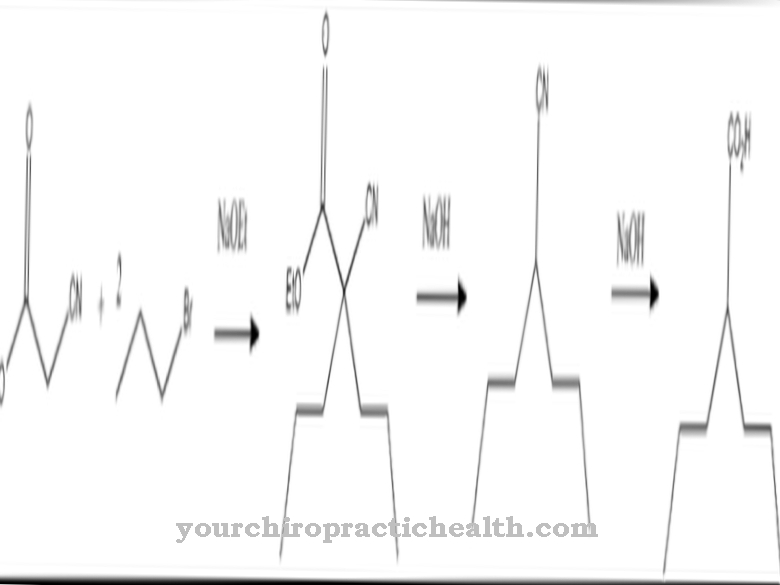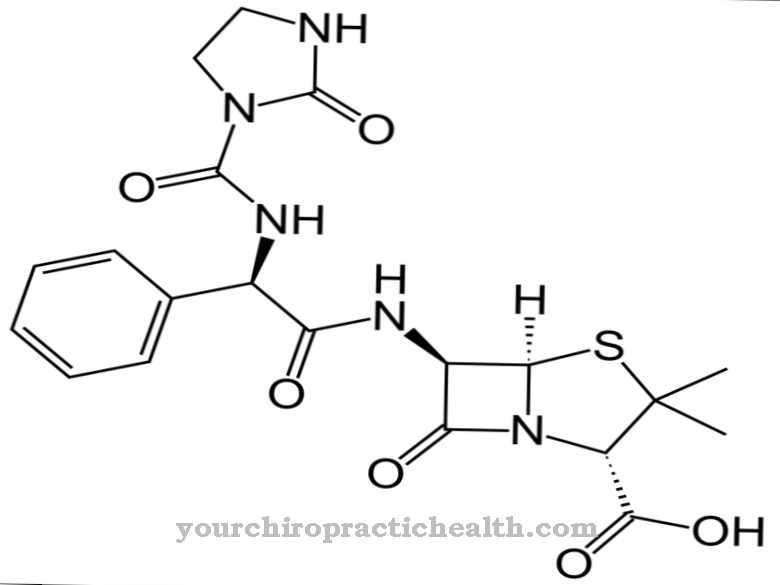At Mycophenolic acid is a drug that belongs to the class of immunosuppressants. As the first characteristic antibiotic, its mode of action on cell growth and division was researched. It has been considered a reliable drug for about 85 years and is now widely prescribed in the organ transplant field.
What is mycophenolic acid?

Mycophenolic acid, also known by its Latin name Acidum mycophenolicum, was first made in isolation in 1893 by the Italian doctor and microbiologist Bartolomeo Gosio. During his scientific research, Gosio was able to observe that mycophenolic acid significantly reduced the growth of anthrax pathogens.
Only after Alexander Flemming researched the antibiotic effect of penicillin in 1928 and presented it in 1929 and released it for medical use, the spectrum of medical care with antibiotics was expanded. A co-discoverer of penicillin came across the research results of Bertolomeo Gosio. He completed the observations and the mode of action of the selective, non-competitive and reversible inhibition of mycophenolic acid.
The drug is a white crystalline powder, which is also under the molecular formula C17H20O6 is known. It is almost insoluble in cold water, sparingly soluble in toluene, and moderately soluble in diethyl ether and chloroform. The white powder is only easily soluble with the addition of ethanol.
Pharmacological effect
Today mycophenolic acid is used as an immunosuppressant for prophylactic treatment and for aggressive diseases. The pharmacological goal is based on the selective, non-competitive and reversible inhibition of an enzyme which is important for the biosynthesis of guanosine. The enzyme is known under the name of inosine monophosphate dehydrogenase.
By inhibiting the enzyme, the proliferation of B and T lymphocytes and DNA synthesis are blocked. While these cells are blocked, the other cells can find another biosynthetic pathway. The difference between mycophenolic acid and other immunosuppressants is that it does not become lodged directly in the DNA.
Medical application & use
Medical treatment using mycophenolic acid is in the form of tablets. As an indication, the focus is on prophylactic treatment in organ transplants, in combination with another immunosuppressant to prevent symptoms of rejection.
Furthermore, the medication can be prescribed if there is a severe rheumatic disease with infestation of the internal organs. If the organs are not yet infected, the drug can be taken prophylactically to prevent this.
Therapy with this immunosuppressant should, if possible, only be carried out by doctors with experience in the field of organ transplantation. The dosage is individually tailored to each patient, mostly in adults around 720mg, twice a day. The infiltration of mycophenolic acid should be fully documented by regular laboratory blood tests in order to avoid an overdose.
The drug should not be used during pregnancy and breastfeeding. If there are known allergies to the individual components of mycophenolic acid, they should also be avoided here and an alternative to this drug should be prescribed if necessary. Whether the treatment with mycophenolic acid is successful can usually only be seen 3 months after starting the intake.
Often patients notice an alleviation of the symptoms after a treatment period of 4-8 weeks. The effect can be seen in the reduction of pain and less water accumulation in the tissue. The inflammation values in the blood count improve, morning stiffness and tiredness decrease, and resilience increases. In order to achieve continuous improvement, it is necessary to take the drug over the long term. It must be taken regularly, even if the patient's general condition has improved.
You can find your medication here
➔ Medicines to strengthen the defense and immune systemRisks & side effects
As with any pharmaceutical treatment, undesirable side effects can occur. Basically, one should always consider that immunosuppressants weaken the immune system. The body cannot provide a strong defense, which increases the general risk of infection. The infections can occur in the form of bacteria, viruses or fungi.
Other side effects of mycophenolic acid often include gastrointestinal problems (nausea, vomiting, stomach pain), flu-like infections, changes in the blood count, infections of the respiratory tract (bronchitis) and kidney and liver dysfunction. On the other hand, tachycardia (increased pulse rate), tremors, hair loss or the formation of malignant or benign tumors rarely occur.
No vaccinations should be given while taking the immunosuppressant. UV radiation should also be avoided as it can cause skin irritation. The doctor should carry out regular laboratory tests as well as the skin and mucous membranes while taking mycophenolic acid.













.jpg)

.jpg)
.jpg)











.jpg)